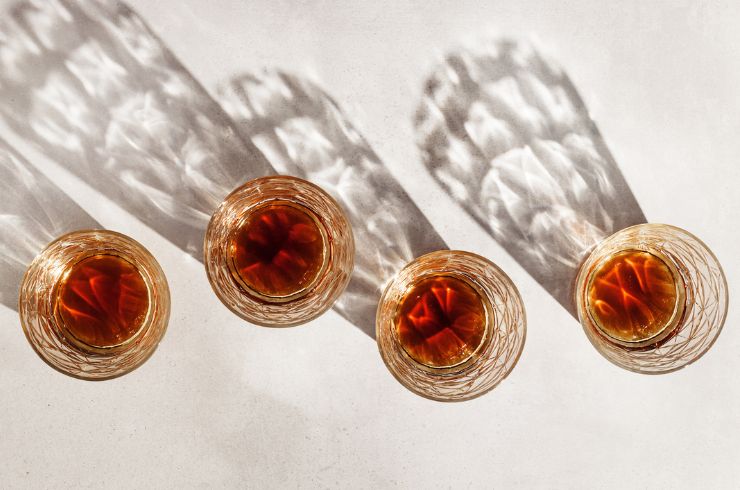The evolution of the glass bottle, dating back 1500 years ago, began in Egypt and blossomed in Roman times. The collapse of the Roman Empire and arrival of the Dark Ages put a hold on the development of glass used for the multiple purposes of today. The Renaissance saw the emergence of glass blowing in Venice and, as technologies developed in England, bottle shapes changed. The onion shape of my bottle of 1646 Tokaji fits neatly into Jancis Robinson’s illustrated discussion of historical bottle shapes between 1680 and 1830 (in The Oxford Companion to Wine).
Within that period came the early cylindrical shapes, united by parallel sides, and, with those, the practice of laying bottles on their sides in bins for development over lengthy years. This gave rise to the need for compatible closures. Cork had been used in sealing amphorae in Ancient Greece, the scale much larger than a bottle.
Wooden bungs wrapped in cloth were as likely to smash the bottle as seal the contents when driven by mallets into the neck of the bottle, so when cork reappeared it became the first-choice closure. Until, that is, when agrochemicals invaded the Portuguese fields in which cork trees grew – as did trichloranisole (TCA), that taint in corks, barrels, pallets and rafters in wineries and ocean containers.

So, where are we today? The most recent developments have focused on closures. Diam has been around for over a decade, superficially the like-on-like substitute for one-piece cork. A by-product is that it allows winemakers to make wine in the bottle, by choosing one of the densities linked to an unconditional guarantee against oxidation for five, 10 or 30 years, and against TCA at any stage. It came onto the market with the simple no-TCA guarantee.
Screwcaps have put a pincer on cork because they, too, offer a series of different oxygen transmission rates (or OTR). Cutting to the chase, today’s Australian winemakers who choose to use screwcaps say no two bottles of wine under cork will be the same, whereas every bottle under screwcap will be the same.
Using the database generated by the annual Halliday Wine Companion, we know how many closures of each type were used in the 12-months cycle. In 2004, 25 per cent of all Australian table wines employed screwcaps; in 2009, 78.2 per cent used screwcaps; and in the current (2023) Companion, the figure is 90.7 per cent.

Some parting comments. First, cracking a screwcap to open and pour all or part of the wine is fast and simple. Second, in the extreme heat of an Australian summer day in the boot or backseat of a car, physical rupture of the cork’s contact with the interior of the bottle neck can occur. Third, try to push a Diam back into the neck of a bottle: it’s virtually impossible. Fourth, screwcaps do not cause reduction. If a wine has precursors of reduction, it will appear as surely as with a cork closure as a screwcap.
The great French wine scientist Émile Peynaud wasted no words when he wrote oxygen is the enemy of wine. I bemoan the fact that I was born 40 years too soon. My cellar had 11,000 bottles at its peak, over half cork-closed, and suffered two moves in Sydney, a big one when I moved to Melbourne in 1983, with temporary storage on arrival living in South Yarra, and a final move to the Yarra Valley in 1985.
This article appears in issue #70 of Halliday magazine. Become a member to receive the print publication as well as digital access.



